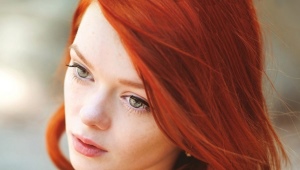White henna for hair

Henna is a natural dye obtained from the leaves of lavsonia, a shrub that grows in hot countries (Arab countries, North Africa, India, Pakistan). This natural dye fills the hair with a deep vibrant color (usually different shades of copper), gives them shine and splendor and does not bear any harmful burden on the body. From the stems of lavsonia, another type of henna is obtained - colorless. It does not stain the hair, but it has a number of useful qualities that are successfully used for hair care. This natural remedy strengthens, restores and thickens the hair shaft, improves blood circulation, awakening the hair follicles and thus stops hair loss. Weak damaged tips become shiny and thick. Product "White henna" attracts consumers primarily with its name, which mentions this wonderful natural ingredient. It must be said right away that white henna does not exist in nature. Let's try to figure it out.

What it is?
The inscription on the package says that this is a hair lightener. The developers promise that if you apply the product on very dark or light brown hair, you can quickly lighten them by 5-6 tones and get the desired result - pearl or ashy color (blond).Recall that bleaching is the result of exposure to aggressive substances, oxidizing agents, which, penetrating deep into the hair, make it porous and “wash out” natural pigments from it, thereby depriving it of color. Natural dyes are not capable of such "meanness", which means that "white henna" contains chemical components. Indeed, it contains:
- Ammonium persulfate;
- Hydrogen peroxide;
- Carboxymethylcellulose;
- magnesium carbonate;
- Citric acid and others.
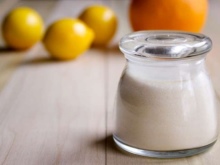

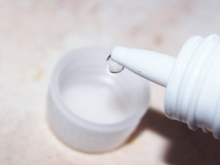
In other words, This is a dye of chemical origin for lightening hair. True, the manufacturer has introduced small amounts of natural additives into the composition: for example, the same colorless henna, extracts of some plants (chamomile, white lemon), chitosan. The presence of these components is designed to soften the irritating effect of the bleaching process on the hair and skin, making it more gentle. When using henna, it is very important to carefully study and then carefully follow the instructions.
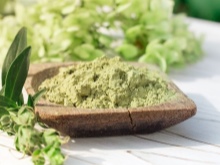
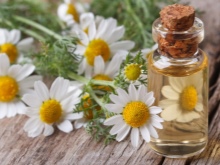

How to breed?
To prepare a solution for staining, the oxidizing agent is mixed with henna powder in a non-metallic container. In some cases, hot water and a little shampoo are added to the mixture so that the composition is better applied. The proportions for the preparation of the product, the duration of exposure and the result may vary slightly depending on the manufacturer. The amount of powder is selected differently, it depends on the thickness of the hair and length. Improperly prepared mixture can cause hair deterioration and even skin burns. It is important to note that before use, the product must be tested for sensitivity to components. On the bend of the elbow, you need to apply a little composition and wait a few hours.In the absence of signs of allergy, the paint can be used. Before bleaching, it is advised not to wash your hair for a couple of days, this should reduce the irritating effect of the drug on the skin and hair.
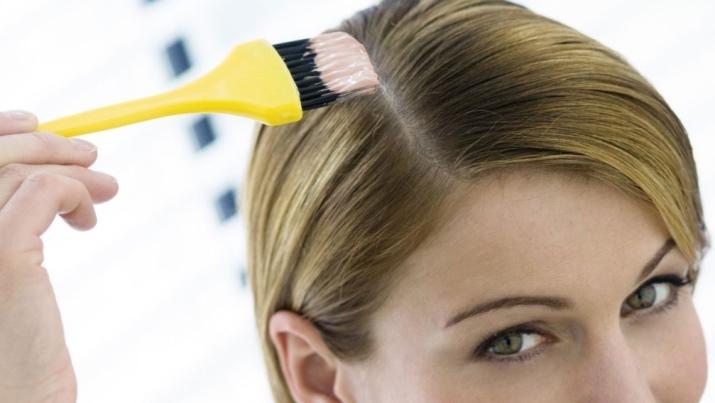
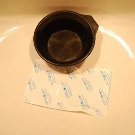

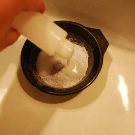
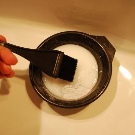
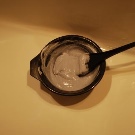
If you have recently dyed or permed, you will have to wait a month and a half or two with discoloration. Otherwise, your curls will become like dry straw and begin to crumble.
But this is only one side of the coin. The fact is that henna is very unpredictable on freshly dyed hair, especially dark ones. So, if you don’t want to turn into a mermaid with green strands, be patient, wait until the paint is washed off and your hair gets stronger. Dry, brittle and split ends, prone to falling out, must first be treated and only then lightened
How to apply?
Before painting, the skin on the forehead and neck along the hairline should be lubricated with a greasy cream to protect it from possible burns and irritation. The prepared composition is applied with a brush to the roots of the hair, divided into strands and then gently distributed along the entire length. At the end, you need to make sure that the coating is evenly coated with a coloring composition. To do this, with your hands massage movements, walk along the entire head of hair, starting from the roots. If henna is used for highlighting, then the composition is applied along the entire length of the strand from roots to ends or, if necessary, an indent of 1-1.5 cm from the roots. The dyed strand is then wrapped in foil. Some instructions recommend that you then put on a cap or cellophane and wrap your head with a terry towel to enhance the bleaching process. But if you have sensitive skin, then you can do without it.
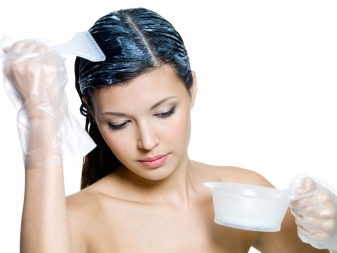

The duration of bleaching can be different: from 10 to 40 minutes and depends on the color of the hair before the procedure and on the result that you need. For example, if you have light curls, then 10-15 minutes will be enough to achieve even more discoloration. The owner of dark strands will have to wait the maximum time allowed according to the instructions. Please note that if your hair condition is not the best, but for some reason you still decide to bleach, it is better to keep the paint as small as possible, otherwise the result is easy to guess - overdried hair that is difficult to comb, which will fall out a lot. Don't expect blinding whiteness from the first use if you have very dark hair. The procedure will have to be repeated several times until you achieve the desired effect. This must be done at intervals of at least 1.5-2 weeks, if you value the beauty and health of your hair.
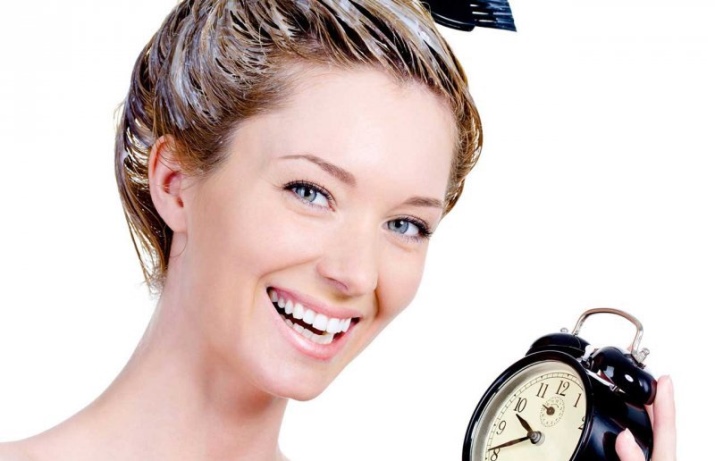
See below for details.
How to wash off?
After dyeing, the hair must be rinsed very well with running water. Although "White Henna" contains natural additives that soften the irritating effect of the chemical components of the paint, it would be better to apply a nourishing and moisturizing balm to wet strands after rinsing, hold for 5-10 minutes and then rinse. To better consolidate the result after staining, it is recommended not to wash your hair for several days. It will not be superfluous to use the healing properties of masks or balms so that your hair comes into shape after “stress”.


Does the cream paint take after henna?
There is doubt whether a new coloring agent will take the hair after dyeing it with henna.And indeed: many women who used "White Henna" and then wished to change the color of their hair again, note that the new paint does not fit well, and the result is an uneven, spotted color. In this case, it is better to wait at least two months and then try to paint differently. It makes sense to first paint a separate strand in an inconspicuous place, evaluate the result, and only then proceed to change the image. In many cases, however, women have to resort to a radical trick - cut off henna-dyed curls, and only then change their hairstyle.

Reviews
You can find enough reviews of consumers who are dissatisfied with the condition of the hair after using white henna. According to them, the curls after the staining procedure became dull and dry, began to fall out and comb badly. However, despite this, many of them good whitening effect and say that they would recommend it as an effective bleaching agent. There are many who, on the contrary, are very pleased with the result, while noting that the condition of the hair remained satisfactory. It can be assumed that in the first case, women either violated the technology for preparing the composition and the rules of use, in particular, abused the duration of the procedure, or bleached their hair that was repeatedly dyed before. Clear, that for weakened, fragile curls, such a chemical process as bleaching will not add health, but, on the contrary, will make them even more vulnerable. Almost everyone notes, as a definite plus, the inexpensive price of this tool, which largely determines the choice.
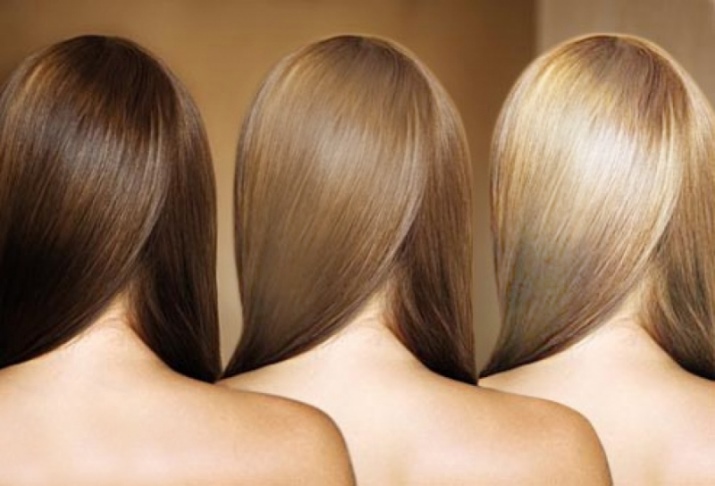
Benefit and harm
Doubtless The advantage of henna over other hair dyes is the presence of natural ingredients in its composition., which provides a good result of coloring without harm to the hair. With the help of this paint, you can turn black hair into snow-white in just a few procedures, which is quite difficult to achieve using other means. White henna masks, aged no more than five minutes, can be used by natural or dyed blondes to eliminate dandruff and excessive greasiness, but they will not work for girls with dark curls.
White henna can be successfully used for hair removal. In stores you can find special formulations for hair removal, where it is included. Ease of use allows you to carry out the bleaching procedure at home, but if used improperly, you can harm your hair from excessive drying up to a scalp burn. Careful adherence to the rules and time of staining, a mandatory sensitivity test will minimize these risks, and then you can get an excellent result at a nice price.
























